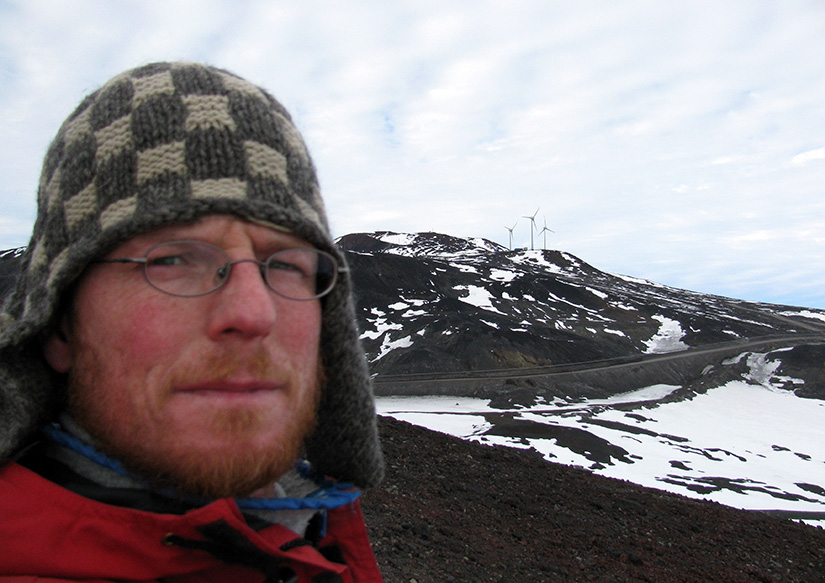Sign up for daily news updates from CleanTechnica on email. Or follow us on Google News!
An opportunity exists at the bottom of the world to show the planet the importance and reliability of renewable energy.

Researchers at two U.S. Department of Energy laboratories—the National Renewable Energy Laboratory (NREL) and Argonne National Laboratory—looked at how a combination of solar modules, wind turbines, and battery storage could provide a cost-effective way to expand research capabilities at the South Pole while significantly reducing costs. The idea to shift away from diesel fuel specially formulated to withstand the extreme cold comes as scientists look toward future experiments.
“Power is just a very limited resource at the South Pole,” said Amy Bender, a physicist at Argonne who is responsible for the infrastructure of existing South Pole Telescope systems.
From research to life in the Antarctica research stations, diesel fuel provides almost all of the necessary power. The fuel is shipped to Antarctica and either flown or trucked to the South Pole, an expensive proposition that could be greatly reduced using wind and solar. Bender said the National Science Foundation (NSF), which operates the research stations on the continent, has “brilliantly” met the challenge of supplying fuel, but it remains a challenge.

Technology Would Work in Extreme Conditions
Bender, who has spent what amounts to a year at the South Pole—broken up over six summers—coauthored a recently published paper examining the economics and feasibility of using renewable energy there. There is a history of examining renewables there, with NSF publishing the results of a small-scale test of solar panels in 2000 and NREL following up five years later with an examination of whether wind turbines would work. Both technologies were able to successfully operate in the extreme conditions there. The NSF has released a draft master plan for the South Pole Station that recommends conducting on-site testing of current renewable energy technologies to determine their suitability for the location.
“The South Pole is one of the most extreme places on the planet,” said Ian Baring-Gould, the Wind Technology Deployment manager at NREL and who coauthored the research publication. “From a technology perspective, we’re fairly confident based on the research that we’ve done thus far that the turbines can operate down to negative 70 degrees. There’s nothing keeping us from doing that. Obviously, people don’t do it on a regular basis because you don’t need to. The same thing is true for solar. Solar modules typically don’t operate down to negative 70 because they don’t need to.”
The government of New Zealand deployed three wind turbines in 2009, with the electricity generated by them supplying power to that country’s Scott Base and the United States’ McMurdo Station. McMurdo is about 850 miles north of the South Pole and is the landing location for all the fuel that eventually goes to the South Pole.

With the technologies proven in sub-subzero weather, the next test dealt with economics. The cost of diesel fuel “is a whole lot higher now than it was back in that 2005 study,” Baring-Gould said.
The new paper calculates the levelized cost of energy for powering the South Pole amounts to $4.09 a kilowatt-hour (kWh) for diesel fuel, compared to 33 cents for wind and 23 cents for solar.
Using the NREL-developed Renewable Energy Integration and Optimization (REopt) tool, which calculates the economic viability of a renewable project, the researchers determined the least-cost scenario to supply a consistent 170 kW of power for new research equipment at the South Pole involves a hybrid system involving six wind turbines, 180 kilowatts of solar, and 3.4 megawatt-hours of battery energy storage. That combination reduces the amount of diesel power consumption by 96%, reducing the need to transport fuel to the South Pole and the subsequent environmental damage of burning that fuel in such a pristine location. Over the course of 15 years, the savings from using less diesel would amount to $57 million. The $10 million investment required to install the renewable technologies could be recouped in about two years, according to the research.
“It could be a little more than that. It could be a little less, but it really pays off quickly in terms of the other option of burning more diesel fuel to meet that power demand,” said Nate Blair, a coauthor of the paper and a group manager in the Accelerated Deployment and Decision Support Center at NREL. As the research stations expand, he said, “it’s not clear that the current system can handle a lot of additional loads.”
One such research project is the South Pole Telescope, a microwave telescope at the South Pole designed to measure the cosmic microwave background, or the light that first winked into existence billions of years ago.
“What we are trying to study is some of the earliest light in the universe,” said Bender, a member of Argonne’s Experimental Cosmology group who holds a doctorate in astrophysics. “It is light that was released about 380,000 years after the Big Bang, so it’s essentially 13 billion years old.”
What cannot be seen by the naked eye, or even by a less-powerful telescope, reveals a wavelength of light that measures only about a millimeter. The water vapor in Earth’s atmosphere interferes with observing these tiny wavelengths, making the placement of the telescopes critically important.
“At the South Pole, it’s so incredibly cold that the water has actually frozen into ice crystals, and ice crystals don’t obscure the view. We can see right through them,” Bender said. “That’s why we’re at the South Pole. It’s really basically the best site on the entire Earth to do this kind of science.”

‘Nothing Is Standing in the Way’
The analysis showing renewables will work at the South Pole is the first step.
“There’s nothing really complicated here from a technology standpoint about why we cannot, or we should not, do this,” said Baring-Gould, who has visited the South Pole previously, supporting NSF in understanding how to use renewable energy to reduce fossil-fuel-generated power. The design and placement of the renewables will require additional work. The solar panels must be designed to avoid becoming buried in snowdrifts, for example. The foundation for the wind turbines will be anchored in ice, which he said has not been attempted before at this scale. “We can do this. That’s not the problem. But we do need to do that homework to make sure that we do it right and we’re successful at it. It’s not a slam dunk, but there’s nothing that is standing in the way of doing this.”
In addition to the weather, the location of the South Pole demands a different approach for the use of renewables. The sun, for example, only illuminates the region for six months of the year and during that time reaches a maximum elevation of 23.5 degrees above the horizon, the researchers pointed out. They proposed a solar array that places the modules vertically to minimize accumulated snow and with the panels arranged into four subarrays oriented to the points of the compass to capture the maximum amount of energy from the sun circling overhead.

Additional work must be done to solve a possible problem with the deployment of wind turbines. The turbines have the potential to cause electromagnetic interference to some experiments at Amundsen-Scott South Pole Station. The researchers said a detailed assessment must be done and a mitigation plan developed.
Baring-Gould, who describes the South Pole as an “amazingly beautiful place,” said the new study “reaffirms really clearly that any place on the planet where you’re running diesel fuel, you should be thinking about renewables as a real viable option. It won’t always be the case that it is, but you really should look at it.”
By Wayne Hicks. Courtesy of NREL.
Have a tip for CleanTechnica? Want to advertise? Want to suggest a guest for our CleanTech Talk podcast? Contact us here.
Latest CleanTechnica.TV Videos
CleanTechnica uses affiliate links. See our policy here.




